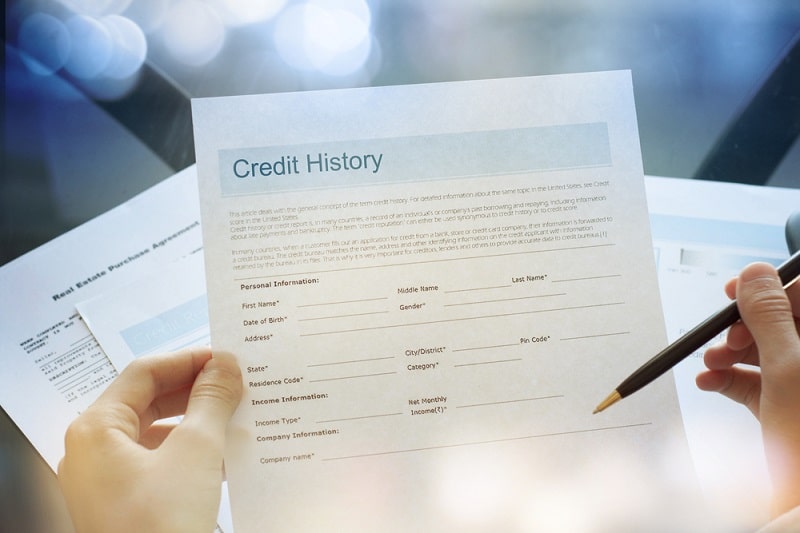How to Rebuild Your Credit: 6 Steps to Get Back on Track
Bad credit can raise your costs and block financial opportunities—but it doesn’t have to stay that way. Whether you’ve missed payments, maxed out cards, or dealt with collections, your credit can be repaired with the right steps and a little consistency.

A low credit score can make everything from renting an apartment to getting a car loan more expensive or even out of reach. The good news is that credit scores are meant to change. They reflect your recent financial behavior more than old mistakes. That means it’s possible to turn things around faster than you might think.
In this guide, you’ll learn the exact steps to rebuild your credit. We’ll cover what to tackle first, the tools that can help, and the pitfalls to avoid so you can start moving toward better credit—and better financial options.
What Rebuilding Your Credit Really Means
Rebuilding credit means improving a damaged credit history. It’s not the same as building credit from scratch. Instead, you’re working to offset past negative marks with positive, consistent behavior going forward.
The key is showing lenders that any past mistakes are not a pattern. Recent positive activity carries more weight than older issues. That’s why, even after serious setbacks like defaults or collections, you can improve your credit score if you focus on the right actions.
Step 1: Check Your Credit Score & Reports
Before you can rebuild your credit, you need to know where you stand. Your credit reports show what lenders are seeing, while your credit scores give a quick snapshot of your credit health.
You can get your credit reports for free once a year from each of the three major credit bureaus at AnnualCreditReport.com. Some services and credit card issuers also offer free score tracking, which can help you monitor your progress over time.
Once you have your reports, review them carefully. Look for any negative marks, late payments, or accounts in collections. Also, check for any incorrect information that could be hurting your score.
Step 2: Correct Credit Report Mistakes
Errors on credit reports are more common than many people realize. Incorrect account balances, payments marked late by mistake, or even accounts that don’t belong to you can all drag down your score.
If you spot any errors, you have the right to dispute them. Start by gathering any documents that support your case. Each credit bureau allows you to file disputes online, by mail, or by phone.
Handling disputes yourself is usually the best option. It’s free, and the bureaus are required to investigate your claim within a set timeframe. However, if you feel overwhelmed or need help, there are reputable credit repair services that can assist. Just be sure to avoid any company that promises quick fixes or asks for large upfront fees.
Step 3: Pay Down Debts
One of the fastest ways to start improving your credit is by lowering your debt balances. High credit card balances, in particular, can weigh heavily on your score.
Focus on paying down any revolving debt, like credit cards or lines of credit. Aim to keep your credit utilization—the percentage of your available credit that you’re using—below 30%. Lower is even better.
If you have multiple debts, you can use either the debt snowball or avalanche method to pay them off. The snowball method has you pay off the smallest balances first, while the avalanche method focuses on debts with the highest interest rates. Either strategy can work. The important thing is to pick a plan and stick with it.
If you’re struggling to make progress, consider contacting your creditors. Some may be willing to lower your interest rates or set up a payment plan to help you pay down what you owe faster.
Step 4: Build a Positive Payment History
Your payment history is the single biggest factor in your credit score. That means making consistent, on-time payments is one of the best things you can do to rebuild your credit.
Set up payment reminders or, better yet, automatic payments whenever possible. This will help you avoid missing due dates, which can lead to further negative marks on your reports.
If you can’t afford to pay everything in full, at least make the minimum payments on time. Even small, steady progress shows lenders that you’re reliable and working to improve your financial situation.
Step 5: Use Credit-Boosting Tools
Once you’ve addressed errors and started paying down debt, adding positive credit activity can help speed up your progress. There are several tools that can make this easier.
- Secured credit cards – These require a refundable deposit and are designed for people with bad or limited credit. Use them for small purchases and pay off the balance in full each month.
- Credit-builder loans – These loans hold the borrowed amount in a savings account while you make monthly payments. Once the loan is paid off, you get the money and a record of on-time payments is added to your credit reports.
- Authorized user accounts – A family member or friend can add you as an authorized user on their credit card. As long as they pay on time and keep balances low, this can help improve your credit.
- Rent reporting services – Some services will report your on-time rent payments to the credit bureaus. This can be an easy way to add positive payment history if your landlord doesn’t already report rent data.
Adding just one or two of these tools can make a noticeable difference, especially if you combine them with the other steps in this guide.
Step 6: Avoid Common Pitfalls
As you work to rebuild your credit, there are a few mistakes that can slow your progress or even make things worse.
Don’t close old accounts unless absolutely necessary. Older accounts help lengthen your credit history, which benefits your score.
Avoid applying for too much new credit at once. Each application creates a hard inquiry, which can temporarily lower your score. Too many applications in a short period can make you look risky to lenders.
Be cautious of companies or individuals who claim they can fix your credit quickly or remove negative marks overnight. These are often scams that take your money without delivering results.
Staying consistent and avoiding these traps will help you stay on track toward better credit.
How Long Will It Take?
Rebuilding credit doesn’t happen overnight, but the timeline can vary based on your starting point and how much negative information is on your reports.
Some improvements can show up in just a few months, especially if you lower your credit card balances or remove errors from your reports. Other changes, like recovering from a bankruptcy or foreclosure, can take years.
Fortunately, recent positive activity usually matters more than older mistakes. Credit scoring models give more weight to your current habits than to past problems. If you stay consistent with the steps in this guide, you should start seeing progress sooner than you might expect.
Should You Hire A Credit Repair Company?
In most cases, you can rebuild your credit on your own. Disputing errors, paying down debt, and adding positive credit activity are all steps you can handle without paying for help.
However, there are situations where hiring a reputable credit repair company might make sense. If your reports have complex errors, or if you don’t have the time or confidence to manage disputes yourself, professional help can be worth considering.
If you decide to hire a company, look for one with a good reputation and transparent pricing. Avoid any service that promises quick results or asks for large upfront fees.
Final Thoughts
Rebuilding your credit takes time, but it’s completely doable if you stay consistent. Focus on correcting any errors, paying down debt, making on-time payments, and adding positive credit activity when possible.
While the process can feel slow at times, every step you take brings you closer to better credit and more financial options. Stick with it, track your progress, and avoid shortcuts that promise fast results but can lead to setbacks.
Good credit isn’t out of reach. With the right plan and a little patience, you can get there.



